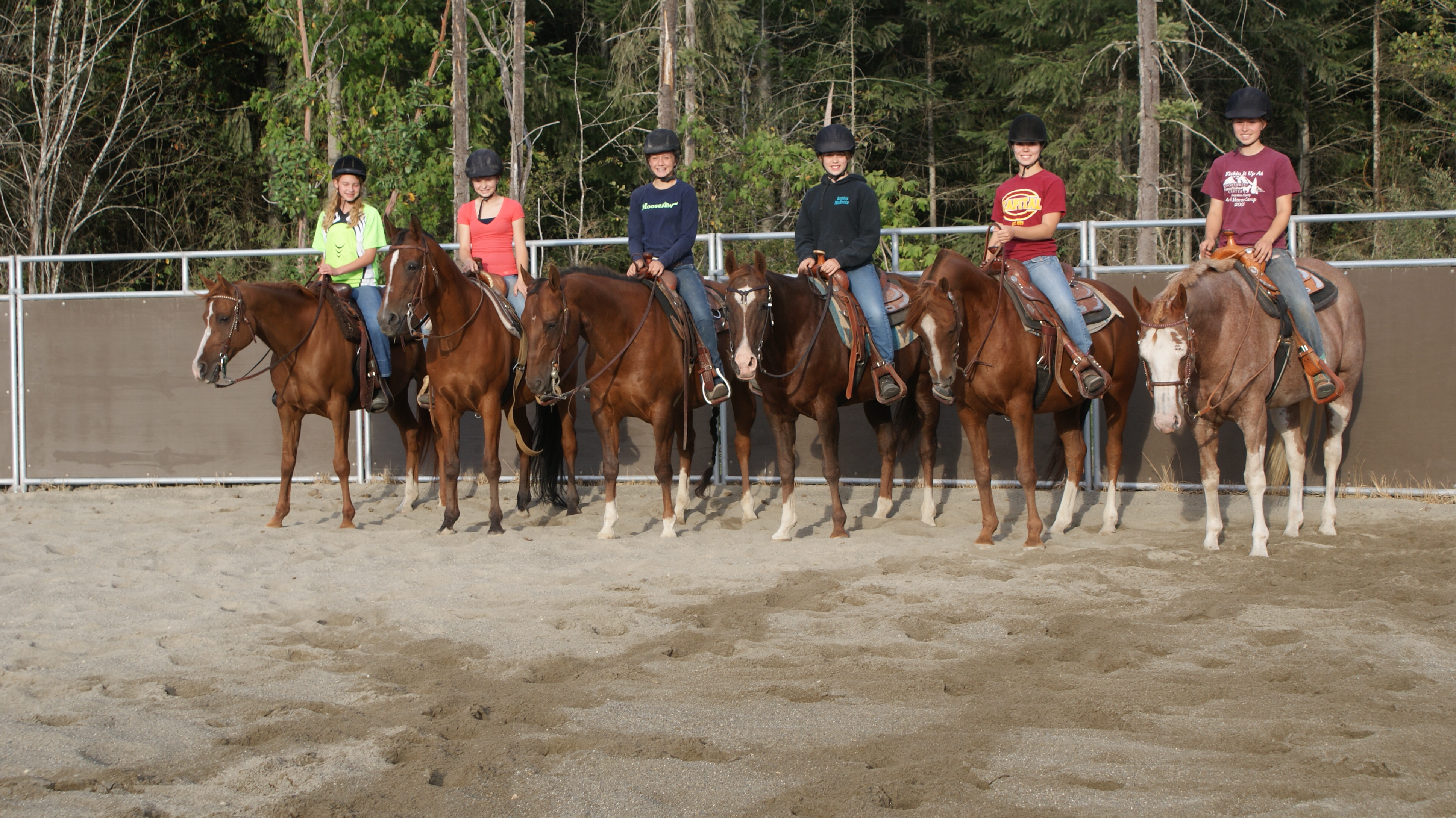By Laurie O’Brien
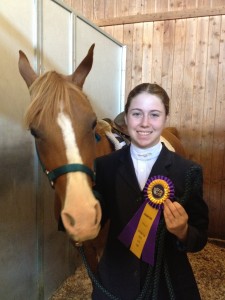
Growing up, my passions led me more toward the arts – music, theater, and dance. But I remember when some of my girlfriends got the itch, that overwhelming desire to spend countless hours on the back of an animal that outweighed them by a half a ton. I understood. Horses are romantic; they’re gorgeous creatures that respond to your every touch. They can take you places you could never reach on your own.
They also take a lot of work. They eat a lot. They poop a lot. They require a lot of space, and they need a lot of exercise. Unless it’s an old stable horse, you can’t expect to just sit on its back and have it take you on a trail ride; you have to learn how to work with a horse to get it to respond the way you want and expect it to.
Thurston County 4-H horse clubs give young girls and boys who get the equestrian bug an opportunity to develop skills both on and off the horse. The four Hs stand for Head, Heart, Hands and Health, and it is a goal of all their programs to foster growth through education and evaluation.
Tim McBride is the coordinator for the Thurston County 4-H Horse Program. He explains it this way: “The 4-H year is a twelve month program. At the end of the program year, we try to provide events so the kids can exhibit what they’ve learned, what they’ve practiced.”
The events he’s talking about are county and state fairs. Program participants are judged, but according to McBride, it’s not about competition. “It’s not ‘me against you’,” he says. Instead, “…it’s me against me.”
At the Thurston County Fair last month, scores of kids showed the results of a year’s work with their horses. They rode in a number of different disciplines using either western or English saddles.
Performance riding is about the relationship between the rider and horse, how well the rider can get the animal to respond to his or her commands. Says McBride, “Performance is all about how the rider and the horse interact together and how the rider can maintain the gaits around the arena. They’ll do a pattern that requires specific movements – forwards, backwards, circles, different gaits in very tight spaces and things like that.”
A subset of the performance category is pleasure riding. McBride’s middle school aged daughter Sophie prefers to show western pleasure which means the judging is more heavily slanted to the horse’s performance than the rider’s. There is less pressure on the rider and more pressure on the horse. Pleasure is a great discipline for novice show riders to enter. In performance equitation, the roles are reversed, and the judges take a more critical look at what the rider is doing to make the horse perform the way it does.
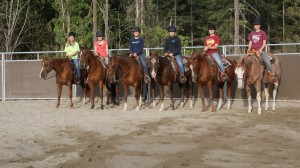
Gaming includes traditional western riding games designed to develop specific riding skills. Barrel racing, pole bending, two barrel flag races, figure eight stake racing, pole key racing and international flags are all contested. Naturally in this category, western saddles are used.
English saddles are used in jumping and dressage (a.k.a. English performance riding). There is even a category for kids who prefer driving over riding a horse. Drivers ride in small buggies hitched behind the horse, and the duo is evaluated on how well the driver commands the horse to perform different gaits using only reins and a crop. No vocal commands are allowed in the judging arena.
In addition to what they are able to accomplish in the ring, 4-H riders are expected to take care of their animals, to learn horse anatomy and basic horse management, including grooming. For the duration of any fair or event, riders are responsible for mucking out stalls and feeding and watering their own horses. Sometimes a more “academic” piece of the puzzle is the presentation of a poster or paper that outlines the relationship the rider has with her animal and what she has learned over the past year.
4-H riders can show at the county fair beginning in third grade. Those in grades 3-5 are in the beginner class, while those in grades 6-8 are considered intermediate. High school aged riders are classified as senior riders.
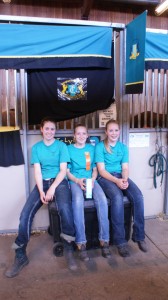
McBride explains the judging criteria: “4-H is all about providing a standard against which the kids are then judged. They’re not judged amongst each other, so one person doesn’t ‘set’ the standard. The 4-H program is all about how kids meet a very black and white standard that’s understood beforehand.”
For many intermediate and senior riders though, earning a high enough evaluation during the August Thurston County Fair meant that they were offered the opportunity to move on and represent Thurston County at the state level. For 4-H, “state” means, the Puyallup Fair. Not everyone who showed at the county level was given the go ahead, but if they met the selection criteria, McBride was happy to offer them a place on the county team. At state, riders are still evaluated on set criteria, but champions are named.
Of the 130+ 4-H Horse Program participants in Thurston County, 26 riders were offered the opportunity to show at the Puyallup Fair. English riding is the bailiwick of 14 year old Maddie Wieland. “I’ve been showing, off and on, since I was about 8, but I really got into it last year,” says Wieland. This year marked the first time she made the county team, and her hard work paid off this weekend when she was named the 4-H 2012 State Intermediate Dressage Seat Equitation Grand Champion.
Wieland rides a horse named Joy that she leases through the Healing Hearts Ranch in Tumwater. Wieland has a personal riding coach or “trainer” who helped line her up with Joy. “She said she’d be a good show horse.” The pairing obviously paid off. The Capital High School freshman also rides as part of a local club, as do all 4-H program participants.
McBride explained that this year Thurston County 4-H had twelve individual clubs. The clubs are based primarily on geography and each has a membership of anywhere from six to about 25 kids. Some kids have coaches while other kids rely upon the 4-H program to help them develop their horse management skills. Skill building clinics and seminars are offered throughout the year. Often a parent will serve as a club advisor while other times outside coaches are brought in. Each participant is responsible for providing their own horse and taking care of whatever fees are associated with that.
“4H is about the kid and their project animal … the development of that project from October to August and the local fair,” says McBride. “4-H is skill building. It’s not about competition. It’s about providing our members an opportunity to exhibit their skill building that they’ve learned over the past 10, 11, 12 months.”
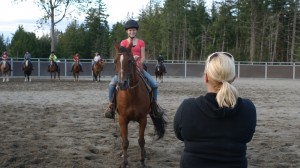
And sometimes, it’s about letting a horse girl follow her passion.
The Puyallup Fair continues through September 23rd. There are daily 4-H horse events and competitions.
Right now is the time for any interested riders to contact the local WSU extension office to learn more their 4-H programs. If you have a child – girl or boy – who is interested in riding, you can connect with a 4-H riding club for the upcoming year.
The Thurston County 4-H office is located at 5033 Harrison Ave. NW, Olympia WA in the old fire station. For more information, click here or call 360-867-2157.







































